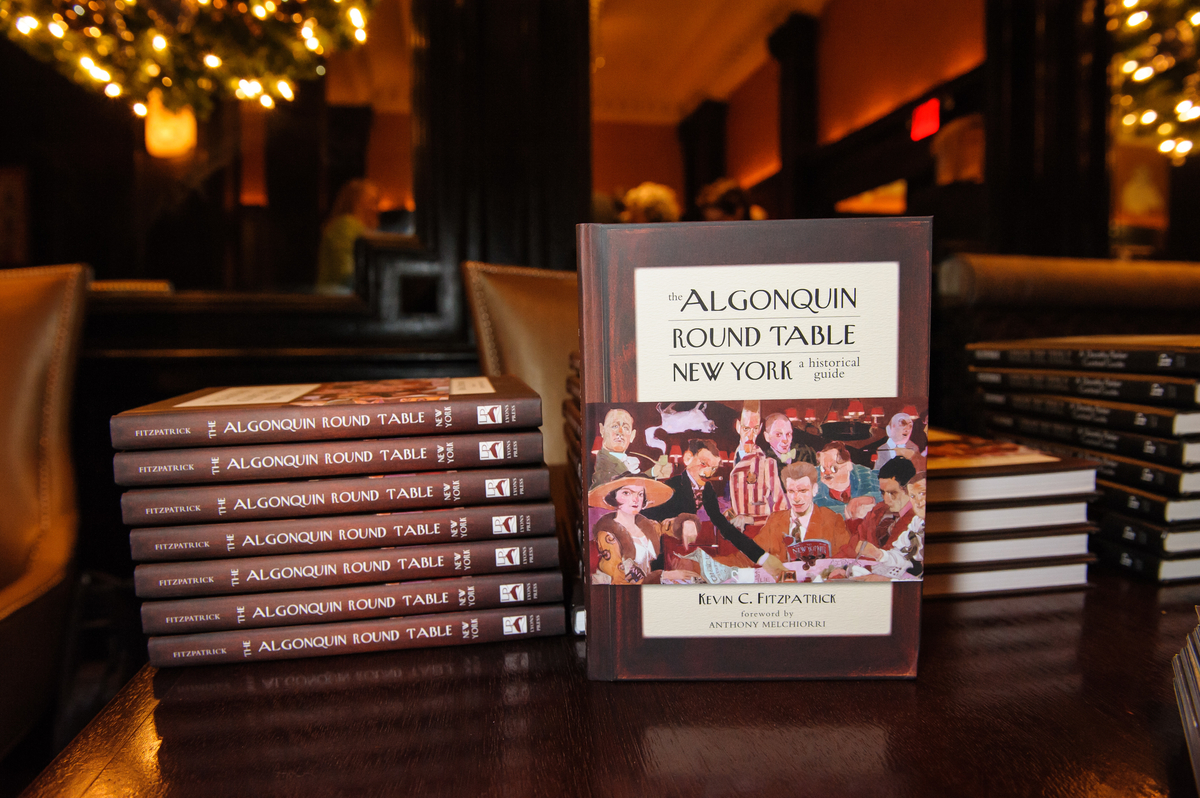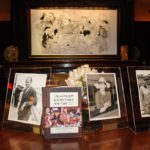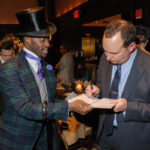On This Date 1955: Harpo Marx in Leonard Lyons syndicated column 29 Aug 1955.
Harpo Marx Humor
Related Post

Marx Brothers Festival Returns in May 2024Marx Brothers Festival Returns in May 2024
It is exciting to announce that the Marx Brothers Festival is returning in May 2024 exactly ten years after the first successful Marxfest in New York. This week, the Marxfest committee announced the festival dates (May 17-19 and May 24-26), and revealed the names of just three of the many great events being planned:
ROBERT KLEIN REMEMBERS: The comedy legend on the Marx Brothers and their influence, in conversation with Jason Zinoman of The New York Times.
UNHEARD MARX BROTHERS: Audio Rarities with collector extraordinaire John Tefteller.
THE THRILL OF I’LL SAY SHE IS: The ultimate centennial experience.
 There will be two weekends of Marx entertainment, May 17-19 in Manhattan and May 24-26 in Coney Island. The full calendar of events and ticket sales have not been announced yet. Currently a crowdfunding campaign is underway, and this supports the festival operations and expenses.
There will be two weekends of Marx entertainment, May 17-19 in Manhattan and May 24-26 in Coney Island. The full calendar of events and ticket sales have not been announced yet. Currently a crowdfunding campaign is underway, and this supports the festival operations and expenses.
Noah Diamond of the committee wrote, “Donate to our crowdfunding campaign. Of course, this is another dreamy, fan-driven project with limitless reserves of nerve, moxie, pluck, vim, and vigor, but other resources are in shorter supply. We’re reliant on donations from fellow Marx Brothers fanatics to help defray expenses like space rentals, printing, equipment, and administration. You will not be surprised to hear that there are fabulous donor rewards described on our crowdfunding page — or that through our fiscal sponsor, Fractured Atlas, donations are tax-deductible to the fullest extent permitted by law!”
Noah sent us a fantastic tie of the Marx Brothers to the Algonquin Round Table. Harpo Marx was a member, and he was close friends with Dorothy Parker and Alexander Woollcott. Noah dug up the 1924 Robert Benchley review from Life, following the Broadway debut of the Marx Brothers:
We are happy to announce that the laughing apparatus of this department, long suspected of being out-of-date and useless, is in perfect running order, and can be heard any evening at the Casino Theatre during those magnificent moments when the Marx Brothers are participating in “I’ll Say She Is.” Not since sin laid it’s heavy hand on our spirit have we laughed so loud and so offensively. And as we picked ourself out of the aisle following each convulsion, there rang through our soul the joyful paean: “Grandpa can laugh again! Grandpa can laugh again!”
“I’ll Say She Is” is probably one of the worst revues ever staged, from the point of view of artistic merit and general deportment. And yet when the Marx Brothers appear, it becomes one of the best. Certainly we have never enjoyed one so thoroughly since the lamented Cohan Revues, and we will go before any court and swear that two of the four Marxes are two of the funniest men in the world.
We may be doing them a disservice by boiling over about them like this, but we can’t help it if we feel it, can we? Certainly the nifties of Mr. Julius Marx will bear the most captious examination, and even if one in ten is found to be phony, the other nine are worth the slight wince involved at the bad one. It is certainly worth hearing him, as Napoleon, refer ti the “Marseillaise” as the “mayonnaise,” if the next second, he will tell Josephine that she is as true as a three dollar cornet. The cornet line is one of the more rational of the assortment. Many of them are quite mad, and consequently much funnier to hear but impossible to retell.
There is no winching possible at the pantomime of Mr., Arthur Marx. It is 110 proof artistry. To watch him during the deluge of knives and forks from his coat-sleeve, or in the poker game (where he wets one thumb and picks the card off with the other), or—oh, well, at any moment during the show is to feel a glow at being alive in the same generation. We hate to be like this, for it is inevitable that we are prejudicing readers against the Marx boys by our enthusiasm, but there must be thousands of you who have seen them in vaudeville (where almost everything that is funny on our legitimate stage seems originate) and who know that we are right.
Do not miss this absolutely fun program of events around New York, all times to the centennial of “I’ll Say She Is.”

Book Launch Party at the AlgonquinBook Launch Party at the Algonquin
The Algonquin Round Table New York (Globe Pequot Press) was published today. I hope you can find a copy in your local bookstore. Here you can enter your ZIP code and it will tell you the closest bookstore to shop local.
We had a fantastic book launch party at the Algonquin Hotel. What was wonderful was the descendants of the Vicious Circle that attended, I thank them so much!
-

- Dandy Dillinger and Don Spiro at the launch party for The Algonquin Round Table New York: A Historical Guide, by Kevin Fitzpatrick, the Algonquin Hotel, January 2015. Photo credit: ©2015 Jane Kratochvil (janekratochvil.com).
-

- Terin Miller, Diane Wade, Dandy Dillinger, and Don Spiro at the launch party for The Algonquin Round Table New York: A Historical Guide, by Kevin Fitzpatrick, the Algonquin Hotel, January 2015. Photo credit: ©2015 Jane Kratochvil (janekratochvil.com).
-

- Frank Werber (left) and Michael Colby. Michael is the grandson of Ben and Mary Bodne, former owners of the Algonquin Hotel. Launch party for The Algonquin Round Table New York: A Historical Guide, by Kevin Fitzpatrick, the Algonquin Hotel, January 2015. Photo credit: ©2015 Jane Kratochvil (janekratochvil.com).
-

- Michael Cook is the grandson of composer Deems Taylor. He produced a CD of his grandad’s music. Launch party for The Algonquin Round Table New York: A Historical Guide, by Kevin Fitzpatrick, the Algonquin Hotel, January 2015. Photo credit: ©2015 Jane Kratochvil (janekratochvil.com).
-

- Vincent Gong (left) and Craig Rosenthal. Vince took photos for the book. At the launch party for The Algonquin Round Table New York: A Historical Guide, by Kevin Fitzpatrick, the Algonquin Hotel, January 2015. Photo credit: ©2015 Jane Kratochvil (janekratochvil.com).
-

- Christine Cassidy and Bob Tevis at the launch party for The Algonquin Round Table New York: A Historical Guide, by Kevin Fitzpatrick, the Algonquin Hotel, January 2015. Photo credit: ©2015 Jane Kratochvil (janekratochvil.com).
-

- Joan Grossman, Michael Cook, Susan Cotton, and Nancy Arcaro. The three sisters are the great-nieces of Dorothy Parker and Michael is the grandson of former owners of the Algonquin, the Bodnes. At the launch party for The Algonquin Round Table New York: A Historical Guide, by Kevin Fitzpatrick, the Algonquin Hotel, January 2015. Photo credit: ©2015 Jane Kratochvil (janekratochvil.com).
-

- Eric Taraby and Christina Hensler at the launch party for The Algonquin Round Table New York: A Historical Guide, by Kevin Fitzpatrick, the Algonquin Hotel, January 2015. Photo credit: ©2015 Jane Kratochvil (janekratochvil.com).
-

- Rocco Staino, Trish Belfatto, and Michael del Castillo. Rocco is chairman of the Empire State Center for the Book, Trish is a member of the Princeton Club, and Michael is a founder of Literary Manhattan. At the launch party for The Algonquin Round Table New York: A Historical Guide, by Kevin Fitzpatrick, the Algonquin Hotel, January 2015. Photo credit: ©2015 Jane Kratochvil (janekratochvil.com).
-

- Author Kevin Fitzpatrick with Dandy Dillinger and photographer Don Spiro at the launch party for The Algonquin Round Table New York: A Historical Guide, by Kevin Fitzpatrick, the Algonquin Hotel, January 2015. Photo credit: ©2015 Jane Kratochvil (janekratochvil.com).
-

- Mariette Booth and Paul Katcher at the launch party for The Algonquin Round Table New York: A Historical Guide, by Kevin Fitzpatrick, the Algonquin Hotel, January 2015. Photo credit: ©2015 Jane Kratochvil (janekratochvil.com).
-

- Author-Director Trav S.D. and artist Carolyn Raship at the launch party for The Algonquin Round Table New York: A Historical Guide, by Kevin Fitzpatrick, the Algonquin Hotel, January 2015. Photo credit: ©2015 Jane Kratochvil (janekratochvil.com).
-

- Susan Cotton, Dorothy Parker’s great-niece, holds Dottie’s Cartier wristwatch at the launch party for The Algonquin Round Table New York: A Historical Guide, by Kevin Fitzpatrick, the Algonquin Hotel, January 2015. Photo credit: ©2015 Jane Kratochvil (janekratochvil.com).
-

- Nancy Arcaro, Dorothy Parker’s great-niece, wears Dottie’s Cartier wristwatch at the launch party for The Algonquin Round Table New York: A Historical Guide, by Kevin Fitzpatrick, the Algonquin Hotel, January 2015. Photo credit: ©2015 Jane Kratochvil (janekratochvil.com).
-

- Nancy Arcaro, Dorothy Parker’s great-niece, wears Dottie’s Cartier wristwatch at the launch party for The Algonquin Round Table New York: A Historical Guide, by Kevin Fitzpatrick, the Algonquin Hotel, January 2015. Photo credit: ©2015 Jane Kratochvil (janekratochvil.com).
-

- Kathy Werber, Frank Werber, and Nancy Arcaro at the launch party for The Algonquin Round Table New York: A Historical Guide, by Kevin Fitzpatrick, the Algonquin Hotel, January 2015. Photo credit: ©2015 Jane Kratochvil (janekratochvil.com).
-

- Ariane Von Kamp and Gigi of Beverly Hills at the launch party for The Algonquin Round Table New York: A Historical Guide, by Kevin Fitzpatrick, the Algonquin Hotel, January 2015. Photo credit: ©2015 Jane Kratochvil (janekratochvil.com).
-

- Author Kevin Fitzpatrick, Ariane Von Kamp, Susan Cotton, and Joan Grossman at the launch party for The Algonquin Round Table New York: A Historical Guide, by Kevin Fitzpatrick, the Algonquin Hotel, January 2015. Photo credit: ©2015 Jane Kratochvil (janekratochvil.com).
-

- Anton Briones at the launch party for The Algonquin Round Table New York: A Historical Guide, by Kevin Fitzpatrick, the Algonquin Hotel, January 2015. Photo credit: ©2015 Jane Kratochvil (janekratochvil.com).
-

- Author Kevin C. Fitzpatrick speaking at the launch party at the Algonquin Hotel for The Algonquin Round Table New York: A Historical Guide, January 2015. Photo credit: ©2015 Jane Kratochvil (janekratochvil.com).
-

- Susan Cotton is the great-niece of Dorothy Parker and Harry Atkins is the nephew of Arthur Samuels. Samuels was an Algonquin Round Table member. At the launch party for The Algonquin Round Table New York: A Historical Guide, by Kevin Fitzpatrick, the Algonquin Hotel, January 2015. Photo credit: ©2015 Jane Kratochvil (janekratochvil.com).
-

- Joan Grossman, Nancy Arcaro, Susan Cotton and their family scrapbook. The three sisters are the great-nieces of Dorothy Parker. At the launch party for The Algonquin Round Table New York: A Historical Guide, by Kevin Fitzpatrick, the Algonquin Hotel, January 2015. Photo credit: ©2015 Jane Kratochvil (janekratochvil.com).
-

- Joan Grossman, Nancy Arcaro, Susan Cotton and their family scrapbook. The three sisters are the great-nieces of Dorothy Parker. At the launch party for The Algonquin Round Table New York: A Historical Guide, by Kevin Fitzpatrick, the Algonquin Hotel, January 2015. Photo credit: ©2015 Jane Kratochvil (janekratochvil.com).
-

- Colin Megna, Tom Megna, Lee Morgan, Michael Colby, and Nicholas Sciammarella. (Tom is Lee’s husband and Colin is their son). Lee is the great-granddaughter of former Algonquin owner Frank Case, Michael’s grandparents Ben and Mary Bodne bought the hotel from Lee’s grandmother, Margaret Case. Nicholas is the social media and marketing director for the hotel. At the launch party for The Algonquin Round Table New York: A Historical Guide, by Kevin Fitzpatrick, the Algonquin Hotel, January 2015. Photo credit: ©2015 Jane Kratochvil (janekratochvil.com).
-

- Raconteur Joseph Griffo at the launch party for The Algonquin Round Table New York: A Historical Guide, by Kevin Fitzpatrick, the Algonquin Hotel, January 2015. Photo credit: ©2015 Jane Kratochvil (janekratochvil.com).
-

- Dandy Wellington and Anton Briones at the launch party for The Algonquin Round Table New York: A Historical Guide, by Kevin Fitzpatrick, the Algonquin Hotel, January 2015. Photo credit: ©2015 Jane Kratochvil (janekratochvil.com).
-

- Dandy Dillinger and Darlene Elkanick at the launch party for The Algonquin Round Table New York: A Historical Guide, by Kevin Fitzpatrick, the Algonquin Hotel, January 2015. Photo credit: ©2015 Jane Kratochvil (janekratochvil.com).
-

- Louise Chardos and Nuala Marley at the launch party for The Algonquin Round Table New York: A Historical Guide, by Kevin Fitzpatrick, the Algonquin Hotel, January 2015. Photo credit: ©2015 Jane Kratochvil (janekratochvil.com).
-

- Michael Colby, author Kevin Fitzpatrick, and Lee Morgan. Both Michael and Lee’s grandparents once owned the Algonquin: Michael’s family is the Bodnes and Lee is from the Cases. At the launch party for The Algonquin Round Table New York: A Historical Guide, by Kevin Fitzpatrick, the Algonquin Hotel, January 2015. Photo credit: ©2015 Jane Kratochvil (janekratochvil.com).
-

- Rocco Staino, Trish Belfatto, Don Spiro, and author Kevin Fitzpatrick at the launch party for The Algonquin Round Table New York: A Historical Guide, by Kevin Fitzpatrick, the Algonquin Hotel, January 2015. Photo credit: ©2015 Jane Kratochvil (janekratochvil.com).
-

- Author Kevin Fitzpatrick holds a pocketwatch that belonged to Harold Ross, founder of The New Yorker, at the launch party for The Algonquin Round Table New York: A Historical Guide, by Kevin Fitzpatrick, the Algonquin Hotel, January 2015. Photo credit: ©2015 Jane Kratochvil (janekratochvil.com).
-

- Power Couple. At the launch party for The Algonquin Round Table New York: A Historical Guide, by Kevin Fitzpatrick, the Algonquin Hotel, January 2015. Photo credit: ©2015 Jane Kratochvil (janekratochvil.com).
-

- Harry Atkins and author Kevin Fitzpatrick. Harry is the nephew of Arthur Samuels. Samuels was an Algonquin Round Table member. At the launch party for The Algonquin Round Table New York: A Historical Guide, by Kevin Fitzpatrick, the Algonquin Hotel, January 2015. Photo credit: ©2015 Jane Kratochvil (janekratochvil.com).
-

- Editor James Jayo, Dandy Wellington, and author Kevin Fitzpatrick. At the launch party for The Algonquin Round Table New York: A Historical Guide, by Kevin Fitzpatrick, the Algonquin Hotel, January 2015. Photo credit: ©2015 Jane Kratochvil (janekratochvil.com).
-

- Eric Taraby and Kaitlin McMenemon at the launch party for The Algonquin Round Table New York: A Historical Guide, by Kevin Fitzpatrick, the Algonquin Hotel, January 2015. Photo credit: ©2015 Jane Kratochvil (janekratochvil.com).
-

- Matilda in her perch at the launch party for The Algonquin Round Table New York: A Historical Guide, by Kevin Fitzpatrick, the Algonquin Hotel, January 2015. Photo credit: ©2015 Jane Kratochvil (janekratochvil.com).











